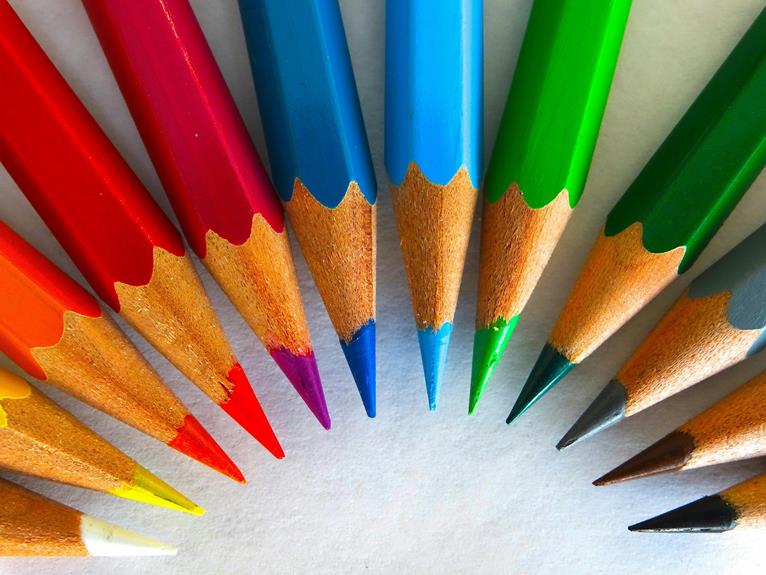Embarking on a quilting project requires a methodical approach, ensuring each step is executed with precision and care. From selecting the ideal fabric to meticulously piecing together intricate patterns, the journey of creating a quilt is a blend of creativity and craftsmanship.
Assembling quilt blocks and adding borders are integral parts of the process, leading up to the final stages of quilting and binding. Each step in quilting holds its significance, contributing to the beauty and longevity of the finished piece.
The art of quilting is a timeless tradition that demands patience and skill, culminating in a gratifying masterpiece.
Choosing the Right Fabric
When embarking on a quilting project, selecting the appropriate fabric is a critical decision that sets the foundation for the entire endeavor. Fabric selection is not only about the type of material but also about the colors and patterns that will bring your quilt to life.
When choosing fabric for your quilt, consider the overall theme or design you want to achieve. If you aim for a traditional look, opt for classic prints like florals or plaids. For a more modern aesthetic, solids or geometric patterns may be more suitable.
Color coordination is key in fabric selection. Think about the mood you want to convey with your quilt. Harmonious color schemes can create a sense of tranquility, while complementary colors bring vibrancy. Pay attention to the contrast between fabrics to ensure that the design elements stand out effectively.
Moreover, consider the weight and texture of the fabric. Lighter fabrics are ideal for intricate piecing, while heavier fabrics provide stability for larger blocks. Ultimately, the fabric you choose will greatly influence the final appearance of your quilt, so take your time in making this important decision.
Designing Your Quilt Pattern
Crafting a well-thought-out quilt pattern is a foundational step in the quilting process that requires careful consideration and creative vision. When designing your quilt pattern, sketching ideas and selecting colors are essential components to bring your vision to life. Here are four key elements to consider:
- Sketching Ideas: Start by sketching different quilt block layouts or designs to visualize how the final quilt will look. This helps in planning the arrangement of colors and shapes.
- Color Selection: Choose a color palette that complements the theme or purpose of the quilt. Consider the mood you want to convey and how different colors work together.
- Balance and Contrast: Aim for a balance between different elements in the quilt pattern. Incorporate contrasting colors or patterns to add interest and depth to the design.
- Scale and Proportion: Pay attention to the scale of the quilt blocks in relation to the overall size of the quilt. Ensure that the proportions work harmoniously to create a cohesive look.
Cutting and Piecing Fabric
Having finalized your quilt pattern design, the next step in the quilting process involves meticulous cutting and piecing of fabric to bring your envisioned creation to reality. Fabric selection is crucial at this stage; choose fabrics that complement each other in color and texture, ensuring they align with your overall design aesthetic. Consider the weight and weave of the fabrics as well, as these factors can impact the final look and feel of your quilt.
When it comes to cutting techniques, precision is key. Use a rotary cutter, a cutting mat, and clear quilting rulers to ensure accurate and straight cuts. Follow your pattern instructions carefully to cut the fabric pieces to the correct size and shape. Take your time to avoid mistakes that could affect the overall outcome of your quilt.
Additionally, be mindful of fabric grainlines and patterns when cutting your pieces. Aligning fabric pieces properly will result in a more cohesive and professional-looking finished quilt top. By paying attention to fabric selection and employing precise cutting techniques, you set the foundation for a successful quilting project.
Assembling Quilt Blocks
To efficiently construct a quilt top that showcases your carefully chosen fabric pieces, it is essential to master the art of assembling quilt blocks with precision and attention to detail. When it comes to assembling quilt blocks, there are several crucial factors to consider:
- Block Placement, Color Coordination: Carefully plan the arrangement of your quilt blocks to create visually appealing patterns. Experiment with different layouts to achieve the desired look. Ensure that the colors of your fabric pieces complement each other harmoniously.
- Stitching Techniques, Pressing Methods: Use accurate stitching techniques such as a precise 1/4-inch seam allowance to ensure that your quilt blocks come together neatly. Employ pressing methods like pressing seams open or to the side based on the block's design to reduce bulk and achieve crisp seams.
- Accuracy in Cutting and Piecing: Prioritize accuracy in cutting fabric pieces to the correct measurements and piecing them together meticulously. This precision will result in well-aligned blocks that fit seamlessly into your quilt top.
- Consistent Block Size: Maintain uniform block sizes throughout your quilt to facilitate easier assembly and ensure a professional-looking finished product. Double-check measurements and trim blocks as needed to achieve consistency.
Adding Borders and Sashing
In the realm of quilting, the addition of borders and sashing plays a crucial role in framing and enhancing the overall design of your quilt top. When selecting borders, consider options such as plain borders, pieced borders, or intricately designed borders to complement the quilt blocks. Color coordination is vital; borders can either blend harmoniously with the quilt blocks or provide a striking contrast to make the design pop.
Sashing, the strips of fabric between quilt blocks, adds a decorative element and helps unify the quilt's layout. Techniques for sashing include cornerstones, which are small squares at the intersection of sashing strips, and different widths to create visual interest. Size considerations for sashing involve determining the width based on the overall design aesthetic and whether you want the sashing to be a subtle divider or a prominent feature in the quilt.
Careful selection of border options and sashing techniques, along with attention to color coordination and size considerations, will result in a beautifully framed quilt top that enhances the overall visual appeal.
Quilting and Binding
An essential component in the quilting process is the meticulous stitching together of the quilt top, batting, and backing layers, known as quilting, followed by the binding to finish the edges and secure the layers together.
Hand Stitching vs. Machine Quilting:
- Hand stitching involves traditional techniques that provide a personal touch and intricate detailing to the quilt.
- Machine quilting offers efficiency and consistency, making it suitable for larger projects or when time is a constraint.
Mitered Corners:
Mitered corners give a clean and professional look to the quilt binding. This technique involves folding the binding at a 45-degree angle to create a neat finish at the corners.
Quilt Labels:
Adding a quilt label is a crucial step in preserving the story behind the quilt. It includes details such as the quilter's name, date of completion, and any special notes that add sentimental value to the quilt.
Frequently Asked Questions
How Can I Properly Store My Quilt Once It's Completed?
Proper storage of a completed quilt is crucial to maintaining its quality. Consider options like folding neatly and placing in a cloth bag or hanging it on a padded hanger. Avoid direct sunlight and excessive humidity for preservation.
What Are Some Tips for Choosing the Right Thread for Quilting?
When selecting thread for quilting, consider factors like weight for desired effect, color coordination for aesthetics. Brands like Aurifil, Mettler offer quality options. Adjust machine tension as needed. Experiment with different threads to find what works best for your project.
Is It Necessary to Pre-Wash Fabric Before Starting a Quilting Project?
Pre-washing fabric before a quilting project is essential to prevent fabric shrinkage, ensuring the final quilt retains its shape after washing. It also helps to prevent color bleeding, providing longevity to your quilted creation.
How Do I Prevent My Seams From Puckering When Piecing Fabric Together?
To prevent seams from puckering when piecing fabric in quilting projects, ensure proper pressing techniques, use a suitable stitch length, prepare fabric by pre-washing and starching if necessary, and securely pin baste layers together before sewing.
What Are Some Common Mistakes to Avoid When Quilting?
When quilting, common mistakes to avoid include improper color coordination in design layout, inconsistent stitch tension leading to puckering, and poor fabric selection. Attention to these details is crucial for successful quilt-making.
Conclusion
In conclusion, quilting involves a series of essential steps:
- Choosing the right fabric
- Designing a quilt pattern
- Cutting and piecing fabric
- Assembling quilt blocks
- Adding borders and sashing
- Quilting and binding the quilt
Each step requires attention to detail and precision to create a beautiful and functional final product. By following these steps carefully, quilters can create stunning works of art that can be cherished for years to come.






